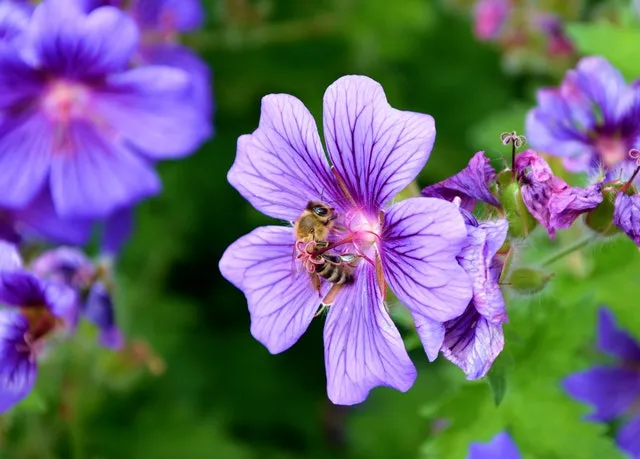Happy 50th anniversary of Earth Day.
In 1969 John McConnell presented to UNESCO the idea of a worldwide celebration called Earth Day and April 22 was chosen because it was the first day in spring when the sun crossed the equator causing day and night to last the same.

This celebration arises to raise awareness of environmental problems and overpopulation.
Today makes this date more important because of what the planet and we as human beings are facing with the coronavirus.
It is a day to pay tribute to our planet and to recognize the earth as mother and home.
It also serves as a reminder:
To one of the smallest and most important living things that inhabit it.

The Bee!

The pollination carried out by bees makes possible the production of two thirds of the world's crops.
And 85% of the plants with flowers.
A great purpose that these small insects fulfill for the world, let's copy their example let's be like the bees.
I say goodbye to my friends in my hive.

Feliz 50 aniversario del día de la tierra.
En 1969 John McConnell presentó ante la UNESCO la idea de una celebración mundial llamada día de la tierra y se escogió el 22 de abril por ser el primer día de primavera donde el Sol cruza el ecuador causando que el día y la noche duren los mismo.

Esta celebración surge para crear conciencia de los problemas ambientales y de la superpoblación.
Hoy hace que está fecha sea más importante por lo que el planeta y nosotros como seres humanos estamos enfrentando con el coronavirus.
Es un día para rendir homenaje a nuestro planeta y reconocer a la tierra como madre y hogar.
Además nos sirve para recordar:
A uno de los seres vivos más pequeños e importante que habitan en el.

¡ La Abeja !

La polinización que llevan a cabo las abejas hace posible la producción de dos tercios de los cultivos del mundo.
Y el 85% de la plantas con flores.
Un gran propósito que cumplen estos pequeños insectos para el mundo, copiemos su ejemplo seamos como las abejas.
Me despido amigos de mi panal.